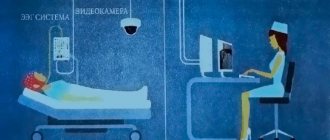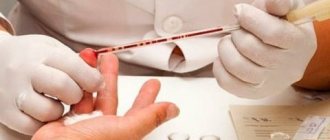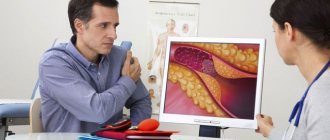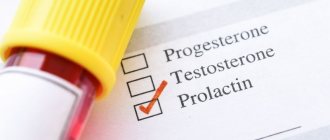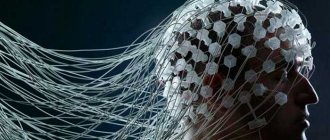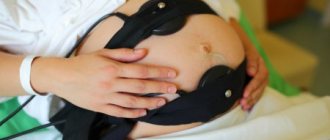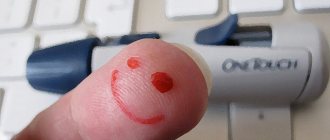EEG (electroencephalography) has important diagnostic value in many neurological diseases. The study is used in the diagnosis of epilepsy, to assess the severity of focal brain damage (cerebral infarction, malignant neoplasms, hemorrhage), encephalopathies of various origins (metabolic, degenerative, infectious). EEG allows you to assess the depth of comatose states. A new direction in the diagnosis of diseases of the central nervous system is nighttime EEG video monitoring. The price depends on the complexity of the study.
At the Yusupov Hospital, neurophysiologists conduct video EEG monitoring of the brain using modern equipment. Functional diagnostic doctors perform the procedure in a specially equipped video EEG monitoring laboratory. Comfortable conditions for falling asleep are created for patients. The registration and decoding of the results of night-time video EEG monitoring is carried out by candidates of medical sciences, leading experts in the field of neurology and neurophysiology. All non-standard research results are discussed at a meeting of the expert council with the participation of professors and doctors of the highest category.
VEEG is indicated
- when establishing a diagnosis of epilepsy (to determine the form of epilepsy, type of seizures, localization of the lesion) before prescribing treatment for epilepsy
- in the absence of seizures during treatment to objectify the effectiveness of treatment (study of changes in epileptiform activity while taking medications)
- when reducing doses of the drug before stopping treatment (the appearance of epileptic activity at a reduced dose indicates the possible occurrence of seizures with further reduction of doses or complete withdrawal of the drug)
- for persistent, treatment-resistant attacks to revise the diagnosis and determine further treatment tactics.
- During pregnancy, to exclude possible relapse of attacks due to the influence of changed hormonal levels on the concentration of antiepileptic drugs.
Prices for VEEG monitoring in the ward:
| EEG for the medical commission (15 minutes) | 1,000 rub. |
| EEG (short recording 1-1.5 hours) | 3,500 rub. |
| Daytime VEEG monitoring | 7,500 rub. |
| Night VEEG monitoring | 13,000 rub. |
| Daily VEEG monitoring | 20,000 rub. |
| 3-day VEEG monitoring | 50,000 rub. |
| 10-day VEEG monitoring | 160,000 rub. |
Our functional diagnostics specialists:
1. Dorofeeva Natalya Evgenievna.
Candidate of Medical Sciences, neurologist, epileptologist at EpiJay Clinic. Functional diagnostics doctor. 2. Zgoda Viktor Nikolaevich. Neurologist, epileptologist at EpiJay Clinic. Functional diagnostics doctor.
3. Lvov Viktor Sergeevich. Functional diagnostics doctor at EpiJay Clinic.
4. Shin Svetlana Vladimirovna. Functional diagnostics doctor at EpiJay Clinic.
Pathological activity that does not occur during the daytime is often activated by sleep. Many pathological discharges increase during sleep, and it becomes clear how dangerous they can be (or not), both in terms of the risk of epileptic seizures and in terms of possible risks to the child's development.
At the same time, interpretation of EEG during sleep is very difficult and requires highly qualified researchers. Particularly in children, there are a number of variations in sleep EEG that are very similar to epileptiform discharges but are normal at certain ages.
When is video-EEG monitoring necessary?
- When diagnosing epilepsy and to assess the effectiveness of therapy.
- Before and during the withdrawal of antiepileptic therapy that was prescribed for epilepsy, neonatal seizures or as a preventive treatment after severe traumatic brain injury.
- Preparation for surgical treatment of epilepsy, when very precise localization of the lesion is necessary to decide on the extent of surgical intervention. In this case, VEM data must be consistent with the results of other methods: MRI, PET, magnetoencephalography.
- Any unclear conditions during sleep that require a differential diagnosis with epilepsy: sleepwalking, nightmares, night dystonia, night migraines and others.
- Any paroxysmal conditions that occur during wakefulness (fainting, shuddering, dystonic attacks, unclear freezing - “thoughts”) that require a differential diagnosis with epilepsy in the absence of pathological activity during the EEG of wakefulness.
- Regression of speech and mental development. If a child developed normally for some time, and then, for no apparent reason (trauma, encephalitis), stopped developing or even lost previously acquired skills, video EEG monitoring is extremely necessary, even if he has never had seizures.
In addition to the above, there are conditions (for example, Landau-Kleffner syndrome) in which epileptic activity that occurs during sleep may manifest itself not as seizures (or not only seizures), but as loss of speech and disintegration of mental abilities.
In this case, only timely treatment can save the child from irreversible lifelong consequences. The diagnosis cannot be established without VEM.
Contraindications to video-EEG monitoring
An absolute contraindication is only the technical impossibility of conducting the study; for example, in the case of traumatic or inflammatory head injuries. The duration of VEM ranges from 1 hour to several days.
A relative contraindication may be the child’s high excitability or aggressiveness.
How to prepare for video-EEG monitoring
In the case of daytime monitoring in the evening, you need to go to bed early and wake up several hours earlier than usual (the morning time, what time you need to get up is variable - parents can often more accurately say how early their child needs to be woken up so that he wants to fall asleep in the morning/afternoon) . Before the study, you should not drink caffeine/tannin containing drinks. The head must be clean; you cannot use hairspray, foam, or wax. It is necessary to have warm clothes, since it is impossible to sleep tightly covered with a blanket. Parents need to prepare in advance their favorite books and toys that can distract and occupy the child during the study. It is also necessary to explain to the child the day before why he is going to the clinic and what the procedure will look like; it is useful to watch a video about the preparation and conduct of the study.
Why is it better to do video monitoring in our clinic?
- The office in which research is carried out is equipped with soundproofing and darkened windows. In addition, in addition to a comfortable bed for research, there are sofas on which the child’s parents can sit.
- Most of the doctors performing and interpreting the studies are practicing neurologists-epileptologists, candidates of medical sciences.
- The research uses the latest equipment from Mizar, the configuration of which was custom-made for the EpiJay clinic.
- Each study is performed with an individual approach for each patient, taking into account his medical history and needs. For example, it is often necessary to artificially induce seizures using noise or conduct a test while the patient is waking up. Our doctors are ready for any research.
- Possibility of on-site research at your home.
- After the examination, a conclusion with a diagnosis is issued. Urgent decryption is possible.
Video-EEG monitoring at home
In some cases, it is difficult to carry out the study in the clinic. For example, with behavioral disorders, neuroses, or autism, it will be difficult for a child to sleep in a hospital. In these cases, home testing is used.
This study is psychologically better tolerated by both parents and the child himself. Everyone sleeps in their usual beds, remains in their usual routine. Thus, research at home is the most gentle for the child.
Expert video-EEG monitoring study
Currently, surgical treatment of epilepsy is gaining momentum. At the moment, this is the only method that, in case of a positive outcome, often allows for a complete cure of epilepsy. Surgical treatment is usually indicated for structural epilepsy, when focal changes are clearly identified on MRI.
In the case of resistant (that is, when antiepileptic drugs did not work after 2-3 attempts to prescribe them) epilepsy, surgical treatment can be considered as a possible method of choice in the absence of focal changes. The result of the operation directly depends on how accurately the boundaries of the epileptic focus are established.
Sometimes the localization and boundaries of the structural focus (visible during an MRI study) and the epileptogenic focus do not coincide. To avoid irreparable errors during surgery, it is important to achieve extreme accuracy in determining the place from which epileptic discharges emanate during an attack. Unfortunately, the sources of epileptic discharges during a seizure and on the interictal EEG may also not be the same, so it is most important when planning surgical treatment of epilepsy to record the EEG during a seizure (“ictal”) EEG. In this case, of course, it is necessary to plan a longer recording – sometimes up to several days. If the recording of an “attack” EEG is carried out on high-tech expert-class equipment with an increased number of electrodes, then the accuracy of localization of the lesion boundaries increases, and, consequently, the postoperative prognosis improves, the number of positive postoperative outcomes and the number of patients completely cured of epilepsy increases.
Decoding and delivery of video-EEG study results
Since video-EEG monitoring is a long-term study (recording lasts at least 1.5-2 hours), it is not possible to immediately issue a conclusion and printout. The turnaround time for the conclusion with decoding and printing is 2-3 business days. At the same time, sometimes urgent decoding of video-EEG monitoring is required, which is especially important for out-of-town patients. For such a case, we have provided. When recording video EEG monitoring, it is important to immediately stipulate the need for such urgent decoding, since, for example, during the holidays (or for a number of other reasons) it is not every day possible to provide you with this service.
Decoding of video EEG monitoring is carried out within 2-3 working days
Rules for conducting video-encephalographic monitoring (VEEG)
The studies were conducted in accordance with the American Society of Clinical Neurophysiology Guidelines for Long-Term Monitoring in Epilepsy.
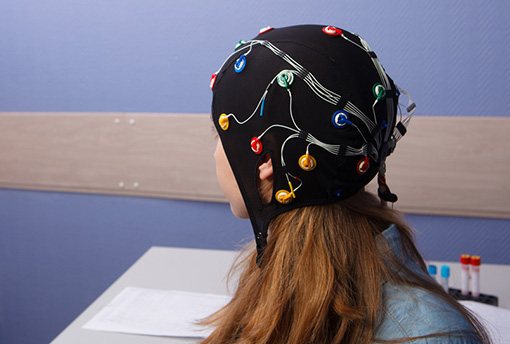
Video-EEG monitoring (VEEG) studies are carried out during the day or night. In some cases, daily monitoring is possible.
Throughout the study, EEG and other body parameters (respiration rate, heart rate) are recorded. The patient's behavior is synchronously recorded on a video camera. Anticonvulsants are taken as usual.
At the beginning of each study, Laboratory staff talk with the patient and find out the individual characteristics of the disease.
During the examination, the patient, through a special remote control, notes changes in his well-being. These fragments are given special attention when analyzing the research results.
Who is the procedure indicated for?
The study is relevant for clinically complex types of attacks, as well as cases where standard electroencephalography does not give accurate, reliable results. A child's sleep EEG has several indications:
- epileptic seizure that occurred for the first time;
- night cramps;
- monitoring the effectiveness of prescribed treatment;
- the need to exclude epilepsy when diagnosing non-epileptic diseases (convulsive conditions not associated with epiactivity, other causes of dizziness, headaches, stereotypic movements, vomiting, sleep disorders, etc.);
- in the form of an EEG recording and mandatory registration of seizures.
Specialists can refer a child of any age for a sleep EEG. The procedure is relevant for infants who cannot complain of headaches. Indications also include anxiety, sleep disturbances, short pauses in the gaze, and developmental delay.
EEG video monitoring allows you to recognize the nature of the attacks and adjust the treatment regimen.
Night EEG study (video EEG monitoring at night)
Time
from 21.00 or 22.00 to 7.00 (9-10 hours)
Process
During video monitoring, the patient is in a specially equipped room, reminiscent of a cozy hotel room. During this time, a special cap with sensors built into it is put on the head. It does not limit the patient’s movements around the ward; if necessary, the ward can be left.
At the beginning of the study, an EEG with standard tests is performed. In our Center, tests with photostimulation and hyperventilation are carried out in an enhanced mode, which increases the information content of the study. If the patient’s well-being changes while watching TV or working on the computer, then additional special exercise regimes are carried out (EEG registration while watching TV and working on the computer).
After the tests, the patient lies down to rest, relaxes and tries to fall asleep. Awakening occurs at 6.00, the patient remains awake for the remainder of the study.
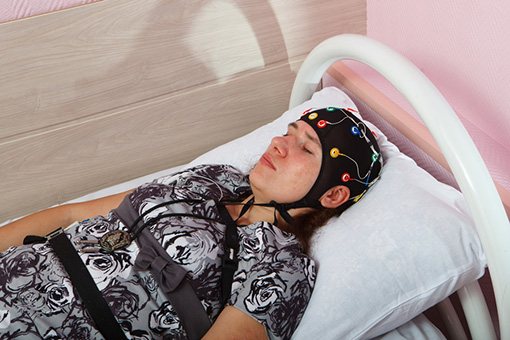
Thus, during a 10-hour recording, 4 hours of wakefulness and 6 hours of sleep are recorded, as well as the moments of falling asleep and waking up.
Conducting VEEG monitoring with on-site visits to your home/health care facility (EEG video monitoring in Moscow)
| Daytime VEEG | 11,000 rub. |
| Night VEEG | 17,000 rub. |
| Daily VEEG | 28,000 rub. |
When conducting a survey outside the Moscow Ring Road, the price increases.
Analysis of EEG/VEEG performed in other institutions
| Duration up to 1.5 hours | 1,000 rub. |
| Duration from 2 to 4 hours | 1,500 rub. |
| Duration from 4 to 12 hours | 2,500 rub. |
| Duration from 12 to 24 hours | 3,000 rub. |
Our service:
EEG video monitoring, like electroencephalography, is an absolutely harmless and painless procedure. However, it involves a rather long stay of the child in the hospital, which, in essence, is hospitalization.
EEG video monitoring procedure at the Children's Consulting and Diagnostic Center at the Lapino Clinical Hospital "Mother and Child":
The child is placed in the ward together with an accompanying adult. The examination procedure begins after attaching the necessary equipment to the child.
Our rooms are fully equipped with everything necessary for a comfortable stay for an adult accompanying a child and are adapted to any requests and needs of a small patient. The chambers are equipped with everything necessary - from household appliances to items intended for entertainment and leisure.
Our doctors
GENERALOV Vasily Olegovich
Head of the center, Doctor of Medical Sciences
SADIKOV Timur Ruslanovich
Candidate of Medical Sciences, doctor, neurologist, epileptologist
KAZAKOVA Yulia Vladimirovna
Doctor, neurologist, epileptologist
TYUMENKOVA Galina Viktorovna
Candidate of Medical Sciences, psychiatrist-psychotherapist
Timonina Oksana Vasilievna
Administrator, manager's assistant
YUGAY Anton Meliksovich
Doctor, neurologist, epileptologist
OREKHOV Andrey Borisovich
Neurologist
MOKHOVA Galina Aleksandrovna
Neurologist
DEMIDOVA Ekaterina Yurievna
Neurologist
Zenkov Semen Sergeevich
Neurologist
MOROZOV Nikolay Pavlovich
Neurologist

